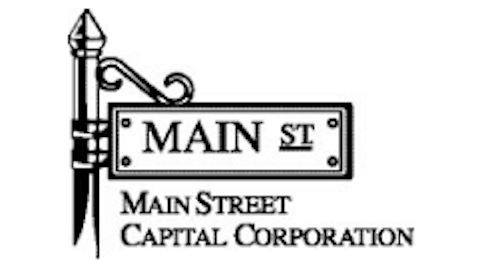Since its IPO in 2007, Main Street Capital Corporation (NYSE:MAIN) has paid out more than one-third of its current value in dividends, never cut its dividend, and more than tripled every dollar invested in the company at its public debut.
No other BDC has a track record like that — and it all comes down to the unique way Main Street Capital Corporation (NYSE:MAIN) makes money. Let’s dive deep into a rising star in private equity stocks.

Main Street’s day-to-day business
Main Street Capital Corporation (NYSE:MAIN) is in the business of money — it’s an investment company best described as a private equity fund. Naturally, Main Street seeks to borrow cheaply and lend expensively.
You might call it borrowing low and investing high.
Unlike a mutual fund or hedge fund, Main Street Capital Corporation (NYSE:MAIN) works exclusively with smaller, unlisted companies, pooling funds into four portfolios:
- Lower middle market (50% of portfolio) — Main Street Capital is one of the few BDCs that will make debt and equity investments in lower middle-market firms. Portfolio companies classified as “LMM” have annual revenue between $10 million and $150 million, and each investment totals $5-$25 million in size.
- Middle market (40% of portfolio) — As one of the smaller BDCs on the market, it seeks out smaller $3 million-$15 million investments in companies with revenues of up to $1.5 billion. Middle-market investments are all debt — no equity.
- Private loans (7% of portfolio) — Private loans are loans in which Main Street participates, but does not originate. Typically, these loans are made in conjunction with a private equity partner.
- Other (3% of portfolio) — Includes portfolio investments in companies that don’t fit criteria for lower middle-market or middle-market investments.
Many investment flavors
Investors have the choice to invest in the debt and equity of a business. Main Street Capital Corporation (NYSE:MAIN) invests primarily in debt, but it also makes equity investments in its lower middle-market portfolio. This differentiates the company from commercial banks, which avoid equity investments to moderate their investment risk.
Lower middle-market investments drive the bulk of dividends and capital appreciation. As of the last quarter, debt investments in lower middle-market companies had a weighted average yield of 15.1% compared to 7.9% for middle-market debt investments, and 12.2% for its private loan portfolio. You read that right: The company generates returns credit card companies would envy.

Source: Main Street Capital’s 2Q 2013 earnings presentation.
As of the last quarter, Main Street Capital Corporation (NYSE:MAIN) had an 80-20 split between debt and equity. Routine debt payments from its portfolio companies allow it to maintain its high regular dividend yield while equity investments create “chunky” upside when it sells its equity stakes to collect gains from appreciation. The company reports that 75% of its portfolio companies are paying dividends.
Equity investments allow it to “double dip” on its loan investments. By the nature of accounting, when a portfolio company repays a loan owed to Main Street Capital, shareholder’s equity in the company goes up. Each time it records a payment received on a debt investment, it can also mark up its equity stake as the portfolio company deleverages — a true win-win.
The Main Street edge
Being a smaller operator is a blessing for Main Street Capital, which can create its own deals in the fragmented lower middle market financing business. The company also finds that lower middle market businesses are willing to accept equity investments, often at lower multiples than publicly traded companies.
Main Street Capital is internally managed, reducing operating costs to just 1.7% for the last 12 months. Other BBCs like Prospect Capital Corporation (NASDAQ:PSEC) and Fifth Street Finance Corp. (NASDAQ:FSC) charge management fees of 2% of assets plus 20% of all returns over 7%-8% per year.
Operating costs have a huge impact on total returns. If Main Street Capital Corporation (NYSE:MAIN) earns 10% per year on its investments, investor wealth would increase by 8.3%, holding operating costs constant. However, the same 10% return for Prospect Capital Corporation (NASDAQ:PSEC) and Fifth Street Finance Corp. (NASDAQ:FSC) would result in 6% returns to shareholders after all management and expense fees are paid.
With as many as 175,000 lower middle market companies in the United States, Main Street Capital has plenty of investment opportunities now and in the future. In the coming days and weeks, I’ll delve deeply into the company to explain the ins and outs of this very interesting BDC.
The article How Main Street Capital Corporation Makes Money originally appeared on Fool.com and is written by Jordan Wathen.
Fool contributor Jordan Wathen has no position in any stocks mentioned. The Motley Fool has no position in any of the stocks mentioned.
Copyright © 1995 – 2013 The Motley Fool, LLC. All rights reserved. The Motley Fool has a disclosure policy.





